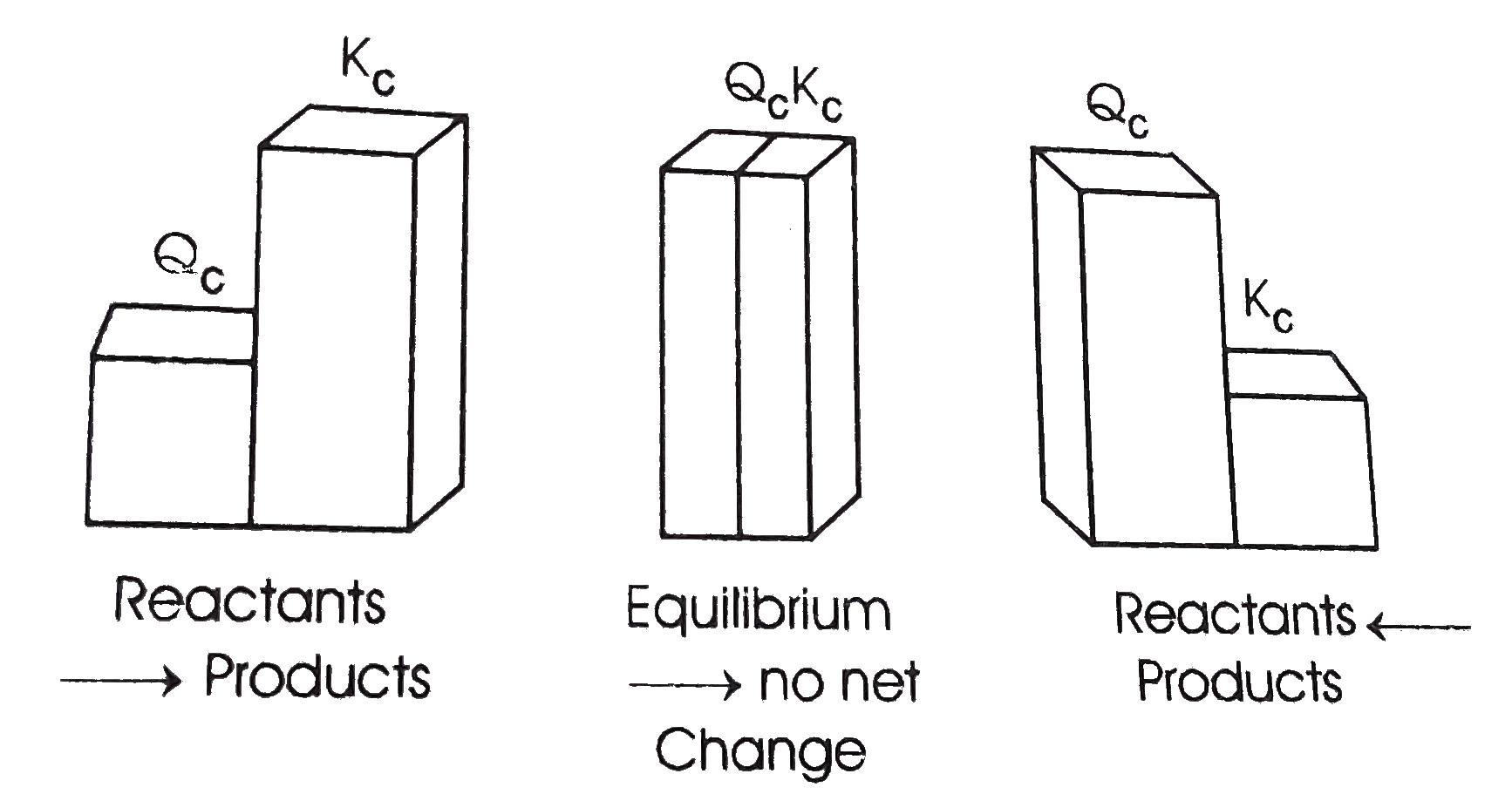For a reaction, A(g)→A(l),ΔH=−3RT
The correct statement for the reaction is :
ΔH=ΔU≠0
ΔH=ΔU=0
|ΔH|<|ΔU|
|ΔH|>|ΔU|
The correct Answer is:D
A(g)→A(1)
ΔH=ΔU+ΔngRT, Given ΔH=−3RT
Here
Δng=np−nr=0−1=−1
⇒−3RT=ΔU−RT,⇒−2RT=ΔU
|ΔH|>|ΔU|
Topper's Solved these Questions
Similar Questions
Knowledge Check
- Question 1 - Select One
For a reaction, A(g)→A(l),ΔH=−3RT
The correct statement for the reaction is :AΔH=ΔU≠0BΔH=ΔU=0C|ΔH|<|ΔU|D|ΔH|>|ΔU| - Question 2 - Select One
For the reaction : N2(g)+3H2(g)⇔2NH3(g), ΔH=−ve, the correct statement is :
Aaddition of catalyst does not change Kp but changes ΔHBat equilibrium, 2GNH3=GN2+3HH2 (G is Gibbs' energy)Cat higher temperature, the rate of forward and backward reaction increases by a factor 2.Dat 400K, addition of catalyst increases rate of forward reaction by 2× and backward by 1.7×. - Question 3 - Select One or More
From the following data, mark the option (s) where ΔH is correctlt written for the given reaction. Given
H+(aq)+OH−(aq)→H2O(l),ΔH=−57.3kJ
ΔHsolution of HA(g) = -70.7kJ/mol
ΔHsolution of BOH(g) = 20kJ/mol
ΔHionization of HA = 15 kJ/mol and BOH is a strong base Reaction ΔHr(kJ/mol)AHA(aq)+BOH(aq)→BA(aq)+H2O−42.3BHA(g)+BOH(g)→BA(aq)+H2O−93.0CHA(g)→H+(aq)+A−(aq)−55.7DB+(aq)+OH−(aq)→BOH(aq)−20.0
For the reaction, A(s)+3B(g)→4C(g)+d(l)ΔHandΔU are related as :
View SolutionThe reaction which is in dynamic equilibrium, ensured us, that the reaction is reversible . But if that the reaction is in equilibrium. The reaction quotient predict either the reversible reaction is in equilibrium or tries to achieve equilibrium. In those reactions which have not achieved equilibrium, we obtain reaction quotient Qc in place of equilibrium constant (Kc) by substituting the concentration of reactant and product at the time, at whih we have to calculate the value of Qc . To determine the direction at which the net reaction will proceed to achieve equilibrium, we compare values of Qc and Kc. The three possible cases are shown as comparison of Kc and Qc in the following figures.

Change in Gibbs free energy, i.e., ΔG is the driving force of any reaction.
For spontaneous reaction , ΔG=−ve
For non-spontaneous reaction , ΔG=+ve
For reaction at equilibrium , ΔG=0
Thermodynamically, we know that
ΔG=ΔG∘+RTlnQ, where Q is reaction quotient and ΔG∘= change in Gibbs energy at standard condition.
For equilibrium A(g)⇔B(g)(Keq=1.732) If the pressure of the system [varied by introducing a stream of A(g) and B (g) is represented by the curve at constant temperature T.

Which of the following is the correct statement at point R in the figure above ?View SolutionFor the reaction,
N2H4(l)→N2(g)+2H2(g)ΔH∘=−50.6kJ.
This reaction is:View SolutionStatement -1 in the following reaction :
C(s)+O2(g)→CO2(g),ΔH=ΔU−RT
Statement -2: ΔH Is related to ΔU by the equation ,
ΔH=Δ+ΔngRTView SolutionFor a hypothetical reaction A(g)+3B(g)→2C(g).ΔH=−100kJandΔS=−200Jk−1. Then the temperature at which the reaction will be in equilibrium is
View Solution

